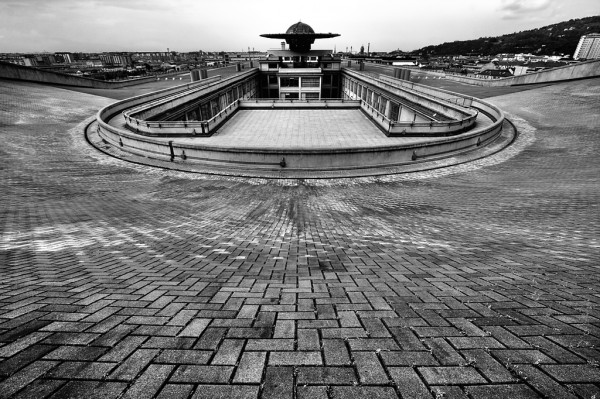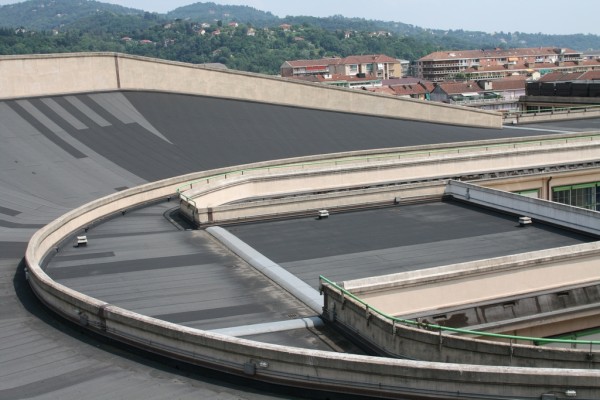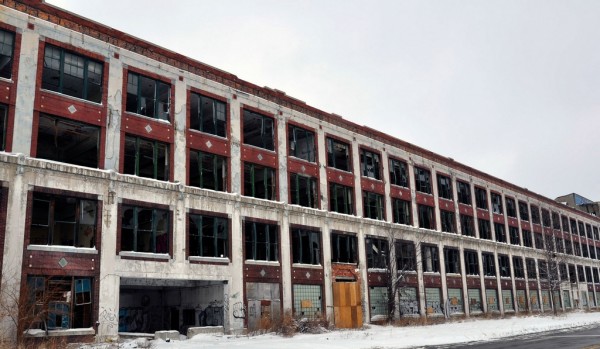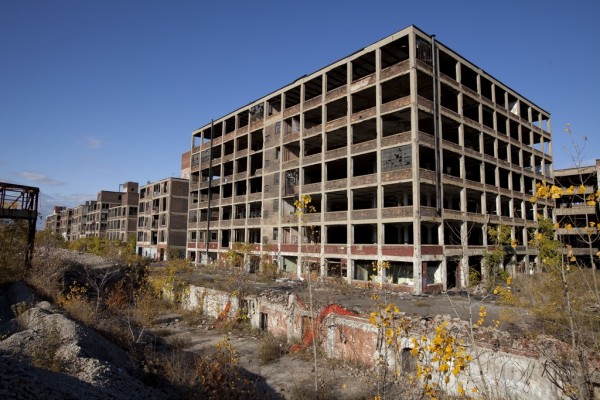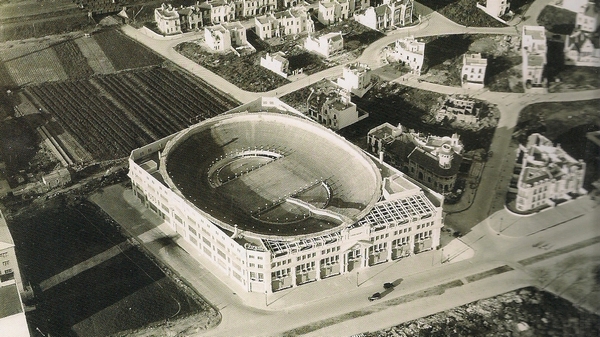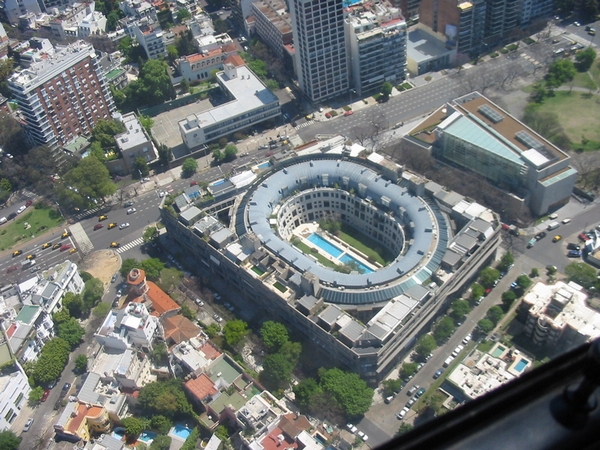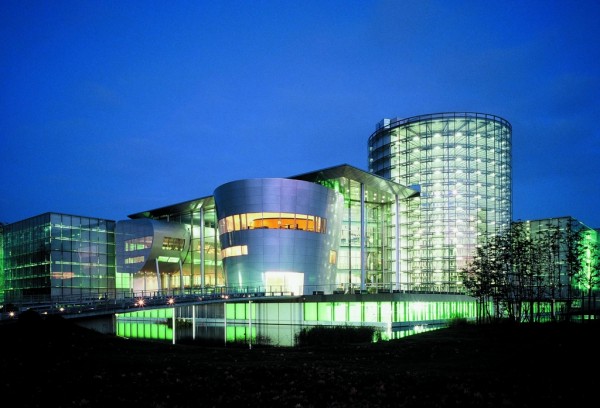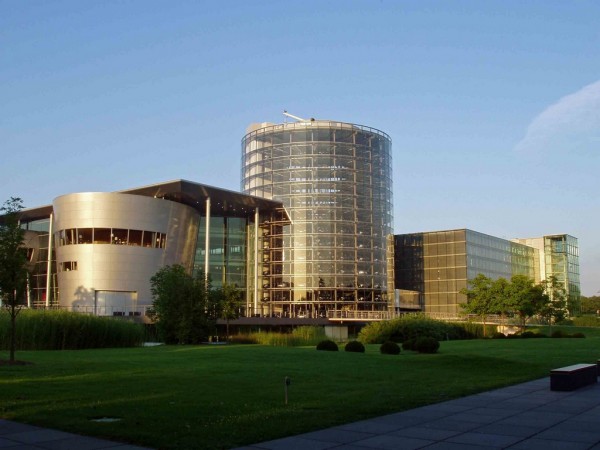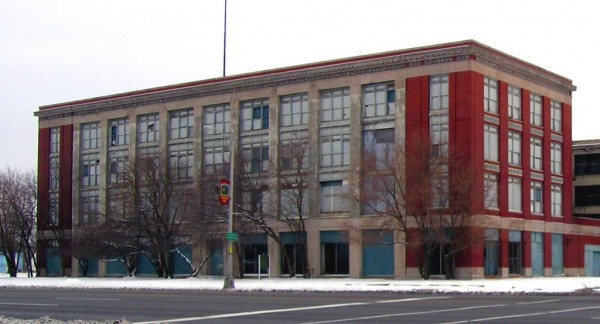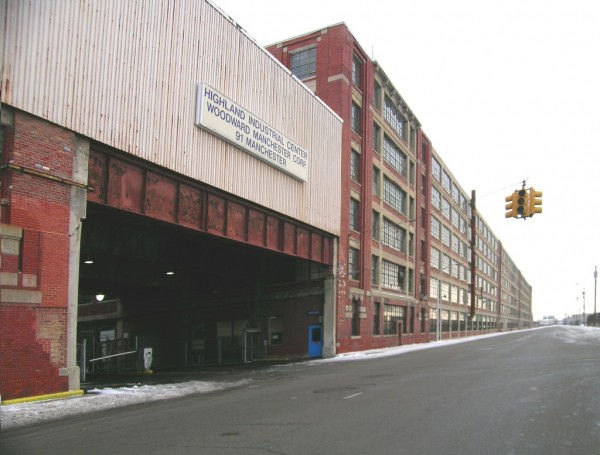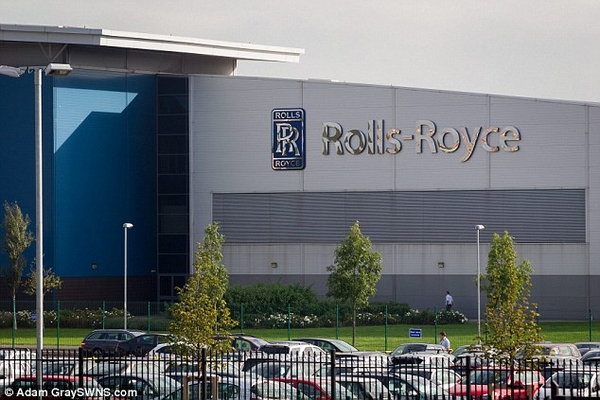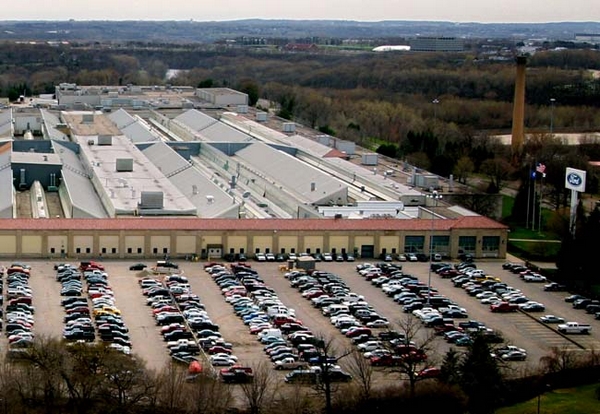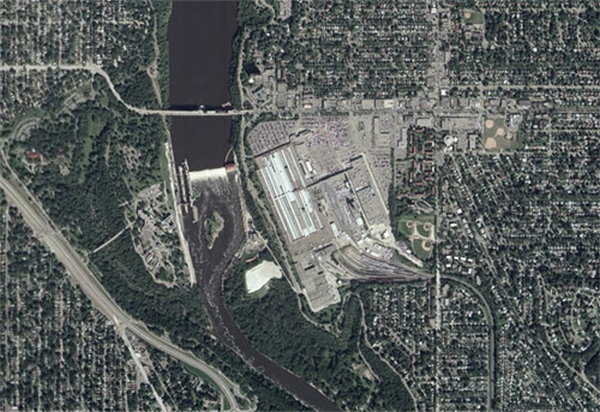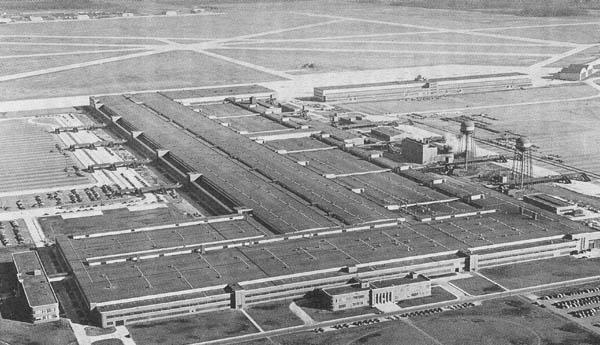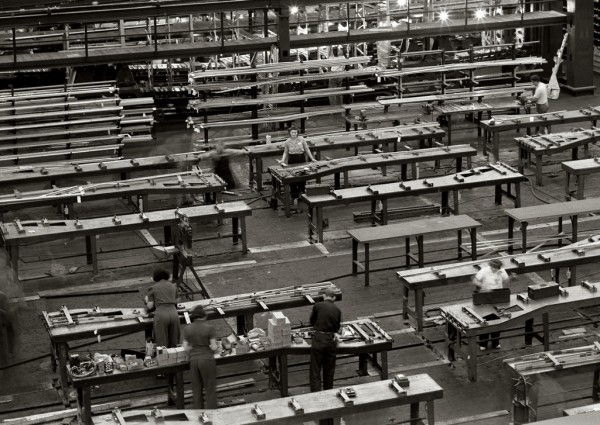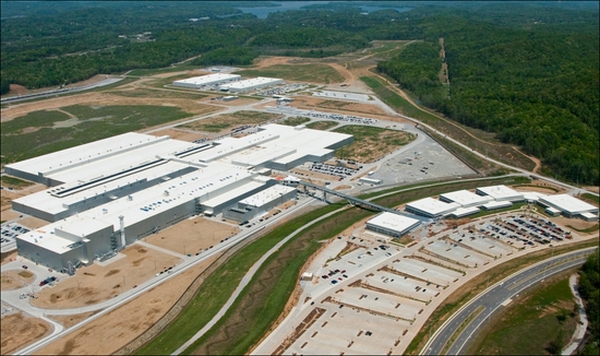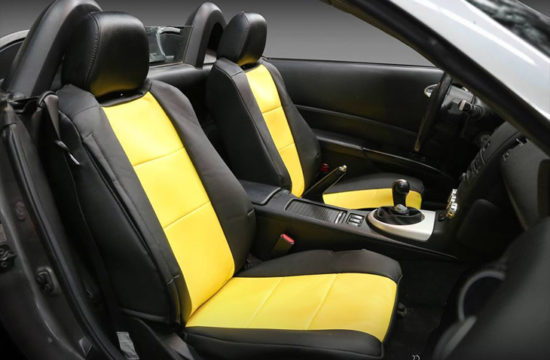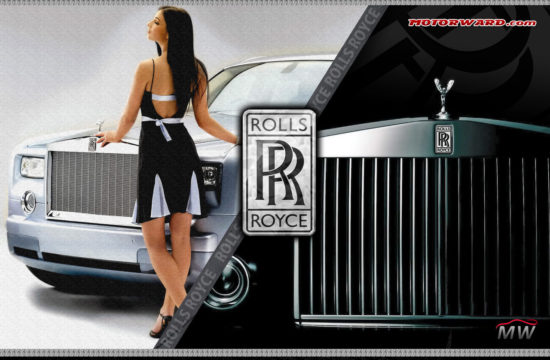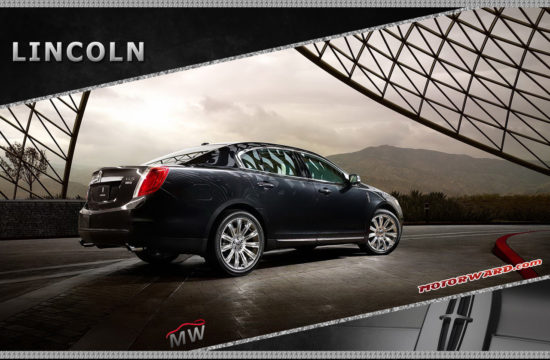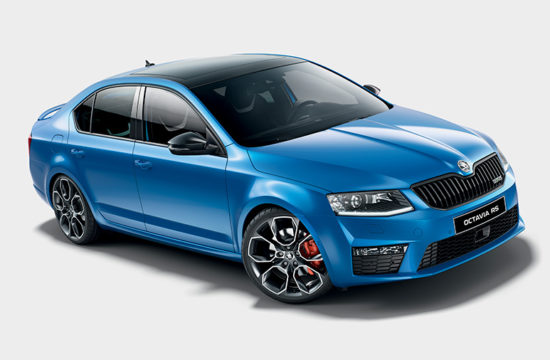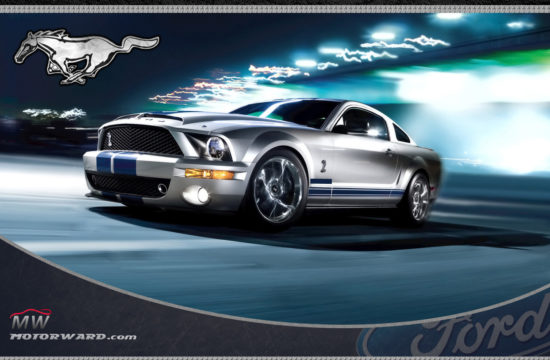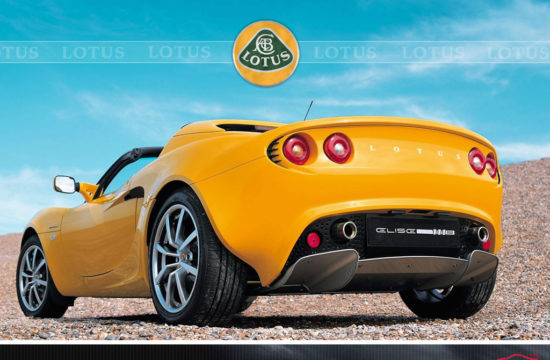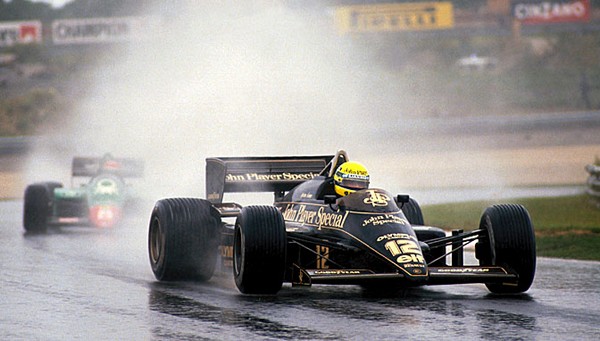A car factory is an amazing place…it is the place where pieces of metal and plastic are put together and create the modern wonder that is the automobile, which many of use daily. Today, building a car is an extremely complex process and modern factories are huge industrial facilities that spread on tens of acres. But it hasn’t always been like that and until a while ago car factories were part of the urban landscape in many cities across the world, mainly to make it easier for employees to get to work.
Throughout the automobile’s history, there have been plenty of interesting factories and writing about all of them would probably take weeks, so we have created a short list of some of the most interesting car factories that ever existed.
Fiat Lingotto (Turin, Italy)
Lingotto is a district of Turin located in the Southern part of the city which got its most famous landmark in the early 1920s. In the 1910s, Fiat’s chairman, Giovanni Agnelli (better known as Gianni Agnelli, son of Fiat’s founder Giovanni Agnelli), took a trip to the United States where he visited Ford’s Highland Park Plant in Detroit, where the Model T was being assembled. Following the visit, the Italian businessman was impressed by the production method used by Ford and he decided to apply it in Italy too. However, Fiat’s production facility at the time, the plant in Corso Dante, couldn’t fit the production line, so a decision was made to build an entirely new factory, which was called Lingotto, after the district in which it was built.
The man responsible for the creating the factory was Italian engineer Giacomo Matte Trucco and work started on the project in 1916. The concept was absolutely incredible for that time: it featured a five story design with a test track built on the roof that was more than 1 km (0.7 miles) long. Today, the roof track allows speeds of up to 56 mph to be achieved in safe conditions. The factory also had an interesting operation mode, because the cars would start being assembled on the ground floor and then made their way up until finished units reached the roof track for testing. Two spiral ramps then allowed the cars to get back to ground level. A similar track was built by Belgian car manufacturer Imperia at itsNessonvaux factory in 1928 and the two are the only rooftop test tracks in the world (though only parts survive from the one in Belgium).
Even though Matte Trucco was the architect who created the building, the man who turned it into an industrial wonder was Ugo Gabbato, who was in charge with dismantling Fiat workshops around Turin and move all production tools and machines to the new factory. The first section was opened in 1922 and it was the largest car factory in Europe. In fact, the building was so impressive that the one who inaugurated it was King Victor Emmanuel III of Italy himself. Also, it was something absolutely new for Europe, because it was the first building designed specifically for a car assembly line (Citroen was the first European carmaker to use an assembly line at its Paris factory, in 1919, but the Lingotto building was the first one build specifically for this).
The assembly line started working in 1925 and three years later, in 1928, the factory reached full capacity. Throughout its history, several famous models where built here, such as the Fiat 509 (launched in 1925, 90,000 were built), the Fiat 508 “Balila” (launched in 1932, 113,000 units built) and, of course, the Fiat 500 “Topolino” (which literally translates to “little mouse” and was built between 1936 and 1955). During its activity, a total number of 80 models were built at the Lingotto plant.
But the production process did face some challenges. For example, even though it was huge, the Lingotto factory only produced 200 cars per day, which was a lot less than what American manufacturers were producing. Ford, for example, built 3,000 units per day at the Highland Park facility. It’s true, the European market was not nearly as large as the American one, but still, Fiat wanted to achieve a market share as big as possible. That’s the reason why the Italian car manufacturer started work on another facility, located in Mirafiori, West of Lingotto. Construction plans were delayed by World War II, but the Mirafiori plant finally opened in 1947 and soon became Fiat’s most important production facility, casting a shadow over the Lingotto plant.
Following the 1973 oil crisis, Fiat faced difficult times that led to the Lingotto factory being closed down in 1982, with the 1979 Lancia Delta being the last model to be built here. But the building was not abandoned, instead Italian architect Renzo Piano was chosen to give new life to it. And he did it brilliantly, because the complex now includes a convention center, shopping mall, theater, concert hall, apartments, a four star Le Meridien hotel and an art gallery displaying the collection of Giovanni Agnelli. The east part of the building is currently being used by the Engineering department of the University of Turin. What’s also great is that car and motorbike access is still allowed on the rooftop track, during special events.
Packard Automotive Plant (Detroit, United States)
In 1899, the Packard brothers started building the Packard automobile in a small factory in Warren, Ohio. One year later, they created the Ohio Automobile Company, which would be the parent company that built the Packard. While other companies were trying to create the most affordable cars on market, Packard targeted wealthy customers from the beginning. For example, a Packard automobile cost around 5 or 6 times more than the cheapest automobile and almost twice as much as other “high-end” models. The car became extremely successful and the company was renamed to Packard Motor Car Company in 1902.
One year later, a group of investors from Detroit, who were very impressed with the Packard, invested in the company and moved it to Detroit, where production started at the modern Packard Automotive Plant, a 40-acre facility on East Grand Boulevard in Detroit. It was one of the first works of Albert Kahn, the same industrial architect that will build the Ford Highland Park Plant ten years later. The plant itself spread on 3.5 million square feet and when it was inaugurated it was one of the most impressive manufacturing facilities in the world, featuring several innovations such as the use of reinforced concrete.
Soon, Packard became the leading manufacturer of luxury vehicles in the United States, also exporting cars to more than 60 countries. At the height of Packard’s success, the Detroit factory had a total of 47 buildings and more than 40,000 skilled workers were employed. Besides luxury automobiles, the Packard Automotive Plant also built Packard trucks.
Following the Great Depression, Packard launched even more expensive models, but the company also tried to create something more affordable and introduced cheaper cars. Following the introduction of the company’s first car that cost less than $1,000, the Packard 120, sales tripled within the first year and doubled again the next year. In 1937, Packard launched another affordable model, the 115C, which also sold great. But even though it helped Packard get over the Great Depression and the 1938 recession, these lower priced models hurt the brand more than its management had imagined. Because in the long run, people were not seeing Packard as that luxurious and exclusive car manufacturer and that had an impact on sales of higher priced models, which were more profitable.
During the World War II, Packard built airplane and marine engines and when the war ended, the company was in great financial condition. However, there were some serious management mistakes made, including making cheaper and more expensive models look almost the same and focusing on selling larger number of cars. But Packard couldn’t compete with Ford or General Motors when it came to volumes. Combined with the fact that people were not seeing them as an exclusive brand anymore led to a crisis for Packard, that got worse and worse and in 1956 the last Packard rolled of the production line.
Two years later, the factory was shut down and was left abandoned, except for a small part which was occupied by a company called Chemical Processing Company. For decades, this company has been the only tenant in the huge complex, despite the city trying to sell it or rent it. During this time, the buildings have been vandalized, scavenged and scrapped, forcing the Chemical Processing Company to move out in 2007 and making the former Packard Automotive Plant the largest abandoned factory in the world. And it will probably stay like this for a long time, because the estimated cost of razing it is around $10 million, which the city of Detroit isn’t actually happy to pay.
Palacio Chrysler (Buenos Aires, Argentina)
In 1927, an Argentinian company called “Reste Brothers” acquired the rights to assemble and sell vehicles from the recently created Chrysler brand. And for all these activities they needed a new place where they could build, sell and test cars.
The man who was put in charge with the project was Italian Mario Palanti, a respected architect in Buenos Aires and “responsible” for works like the Palacio Barolo and the Hotel Castelar. Execution was made by Frederick Benace and the building was inaugurated in 1928. For those times, it was an impressive construction that included the assembly line, sales areas and, perhaps its most impressive feature, a race track on the rooftop. That’s right! It wasn’t just a simple testing track, but a full one mile track with a grandstand that had room for around 3,000 spectators.
The place was called Palacio Chrysler and the rooftop race track was named Estadio Olympus. The impressive factory was built in the Palermo Chico district of Buenos Aires, which at the time was “in the middle of nowhere”, but today, it has turned into one of the Argentinian capital’s upscale neighborhoods. Unfortunately, the Reste Brothers soon went bankrupt in controversial circumstances and their business, including the Palacio Chrysler building was acquired by Fevre& Basset, another Argentinian company importing cars. The new company would later become Chrysler Fevre Argentine, an important subsidiary of Chrysler.
As for the Palacio Chrysler, production was soon closed and the building was taken over by the Argentinian army. In the 1980s, the place was used for several events such as the 1992 Expo-Gourmandoise, before finally being acquired by the Bank of the City of Buenos Aires and turned into an apartment building with luxury lofts. A “Tech Museum Renault” was also opened on the ground floor, but it was closed down in 2011. Today the building can still be visited, but unfortunately the rooftop race trace has been removed and the building is not as spectacular as it used to be in its glory days.
Volkswagen’s Transparent Factory (Dresden, Germany)
Today, the Volkswagen Groups is one of the world’s largest car manufacturers and the 9.7 million cars they sold last year, all over the world, is the only proof we need for that. As you can imagine, building that many cars is not easy and the German giant operates more than 100 factories worldwide, most of them in Europe. Of course, not of them build cars, but that doesn’t make that number less impressive.
But of all the factories the company operates, perhaps the crown’s jewel is the GläserneManufaktur (which means “Factory made of glass” in German) located in the beautiful city of Dresden in the Eastern part of Germany. The factory was built in 2002 after a $200 million investment and its purpose was to assemble the newly introduced Volkwagen Phaeton luxury limousine. However, the factory never reached full capacity and the Bentley Continental Flying Spur was also assembled here until 2006, when all work on the British car was moved to Bentley’s factory in Crewe, England.
As for the building, it is absolutely astonishing. What’s interesting is that unlike most industrial facilities, the Transparent Factory has a central location, just a 10 minute walk away from Dresden’s center. And since Dresden is one of the most beautiful cities in Germany, Volkswagen also put a lot of effort into creating a beautiful factory. 300,000 square feet of glass was used for the building, while the floors are covered with 250,000 square feet of Canadian maple. And if all the glass wasn’t enough, the building is also fitted with large overhead skylights that further improve natural lightning, reducing workers’ strain. To get an idea of how “non-industrial” the entire place is, during the European floods that affected parts of Germany in 2002, the factory hosted several opera events, because Dresden’s opera house was flooded. Another interesting fact about the factory is that with all the glass covering its exterior, in order to prevent birds from flying into the glass, a special outdoor speaker plays bird sounds warning that the “territory is taken”.
At the ground floor, the factory also features tram rails, which are shared with Dresden’s public transport service and help Volkswagen bring in parts and components from a logistics center. That’s because only assembly work is made here, the bodies and other components being produced in Zwickau. On average, around 44 Phaetons are built daily at the Transparent Factory and Volkswagen also offers customers the possibility to pick up their cars themselves. Even though you might be inclined to think many pass on that offer, you’d be surprised how many people actually choose to come and personally drive away with their cars. And to make their experience even better, the Transparent Factory also includes a glass silo where all finished and undelivered Phaetons are being displayed.
The visitor center, designed by award winning designer Bob Rogers, includes a multimedia theater that shows events happening worldwide, a virtual test drive of the Volkswagen Phaeton, an interactive car configurator and a virtual production tour.
Ford Highland Park Plant (Michigan, United States)
Even though the Ford Model T was born at the Piquette Plant, Henry Ford soon realized that measures had to be taken in order to increase production. In 1908, during the Model T’s first month of production, only 11 units were built and the company couldn’t keep up with the demand. So Henry Ford bought 60 acres of land in Highland Park and commissioned famous Albert Kahn to build the new factory. Kahn was one of the most respected architects in the United States and widely regarded as the best industrial architect, developing projects like the Packard Motor Car Company’ factory in Detroit. As for the location, Ford chose it because it was close to three major rail lines, which was extremely important for the automobile industry.
Two years later, the Ford Highland Park Plant was opened and, at its inauguration, the factory was the largest manufacturing facility in the world, allowing Henry Ford to implement the assembly line, an idea he got after visiting several slaughterhouses in Detroit. It was the moment a new era began in the history of the automobile. Because from 11 cars built in a month, Ford was now producing one new car every 12 hours and minutes. That was cut down even more in 1913, when the moving assembly line was introduced and it only took around 5 hours to build a car. During the following year, the new production method was further improved and the time required to assemble a car dropped to just 93 minutes. It was an incredible pace, possible by dividing the assembly work into 29 steps. Workers no longer had to do multiple tasks or install several parts at once instead they just placed one part and then pushed the flywheel down the line to the next worker. For example, installing a flywheel magneto was 7 minutes faster now (13 minutes, down from 20).
This production revolution allowed Ford to significantly lower the price of the Model T, which was $350 in 1917 (compared to $700 in 1910), despite the company paying unskilled workers three times more than other manufacturing plants. The plant also had a strong impact on the small Highland Park village. Before the factory was opened, there were only 425 people living there, while four years later that number reached more than 27,000 people. To make sure his workers don’t leave, beside the increased pay, Ford also offered an on-site hospital, drug store, butcher and grocery stores, trade school for boys and two factory apprentice schools.
In 1928, Ford released the Model T’s replacement, the Ford Model A and also announced that automobile production will be moved from Highland Park to the recently finished River Rouge factory, the largest one in the world at that time. The Highland Park factory was still kept in use for other manufacturing roles such as trim manufacturing or tractor assembly, but it was the beginning of the end for the factory. Today, some parts of the facility are still in good shape, even though one of the four story buildings, the main offices and the powerhouse are gone. Ford Motor Company no longer owns the facility and that are rumors that its current owners are planning on turning it into an automotive themed complex.
Rolls-Royce (Springfield, Massachusetts, United States)
During World War I, Rolls-Royce developed their first plane engines, the Eagle and the Falcon, which brought a lot of attention to the British company. Despite the engines being built in the United Kingdom, many components were imported from the United States and this was one of the reasons Rolls-Royce of America was born in 1919, though the main reason was the increased demand for the British company’s cars. The manufacturer soon acquired its first production facility, the one in Springfield, Massachusetts and began producing and selling cars the following year. In the beginning, many parts were still being imported from Britain and cars were built exactly the same (they even were right hand drive). However, the company soon adapted to the local market and by 1923 it employed more than 1,200 workers and had a total of 16 offices across the United States, including Boston, San Francisco, Chicago and Cleveland.
But just when things were going great for Rolls-Royce, The Great Depression hit the United States and the car manufacturer’s American division suffered a lot. And it’s not surprising at all, considering a car cost around $12,000, four times more than any other luxury vehicle and equivalent to the price of a big house. The factory was closed in 1931 and during its 7 year existence built more than 1,700 Rolls-Royce Silver Ghosts and 1,240 Phantoms. In recent years, the factory was bought and used by one of Rolls-Royce’s suppliers, Tiflex, which builds components for the automotive and aerospace industries. Sadly, the building was demolished two years ago and so far the place is vacant.
Ford Twin Cities (St. Paul, Minnesota)
At a time when Ford dominated the automobile industry, the 2 million square feet Twin Cities Assembly Plant was opened in St. Paul, Minnesota in 1925, being designed by the same Albert Kahn. The factory was located near the Mississippi River and Henry Ford was encouraged to build it here after the High Dam and the hydroelectric plant were built, which were supposed to offer cheaper power. The first models to roll of the Twin Cities production line were the Ford Model T and the Ford Model TT trucks.
What’s interesting is that starting with 1926, Ford produced glass that was used for its automobiles from silica that was mined from underneath the plant, creating a large network of tunnels. Production of glass lasted until 1959 and the mining tunnels still stand today. However, after glass production ended, the tunnels were shut down and they were extremely difficult to get in, due to Ford’s strict security. There’s actually a story running around that in the 1980s some guy managed to get it in the tunnels, was caught by security and kept in a room for six hours, being forced to eat doughnuts and watch Ford promotional videos.
Following the Great Depression, the Twin Cities factory went through some rough times, but was revived during World War II when it produced materials for the war. Following the war, automobile production was resumed and continued uninterrupted until 2011, when the plant was officially closed by Ford. During its 86 year activity, more than 45 different models and 7 million units were assembled at the St. Paul factory. Two years after production ended, Ford began demolishing the factory in June 2013, with the process expected to end this year.
Willow Run (Michigan, United States)
In 1931, Henry Ford bought some land in the Van Buren Township, near a small tributary of the Huron River, called Willow Run. Ford planned on using the farmland here to nurture his passion for country living, but when World War II started, he ended up buying even more land and turning the location into a plane factory and airfield. Ford built the facility with his own money, sold it to the government and then leased it back for the duration of the war. Almost 10,000 B-24 Libertor bombers will be built here during the war and even though many claimed Ford intended to use the factory for tractor manufacturing after (according to the contract with the government, he had first option as soon as the world ended), he didn’t. Instead, the plant was sold to the Kaiser-Frazer Corporation, which built the Kaiser and the Frazer automobiles. Between 1947 and 1953, almost 740,000 cars were built here. However, the company recorded losses in the last years and even built C-119 Flying Boxcar cargo planes that were used by the United States military during the Korean War.
The Willow Run factory returned to automotive manufacturing in 1953, when General Motors leased (and eventually bought) the location after its Transmission Factory in Livona, Michigan was destroyed by a fire. In the beginning, only Hydramatic transmissions were built here, but under GM leadership, the factory was significantly upgraded and expanded and by 1959 the GM Powertrain Factory and Engineering Center in Willow Run was huge: 5,000,000 square feet. Besides powertrains and transmissions, the plant also manufactured Fisher Body cars such as the Corvair or the Nova. And in case you thought bomber and car manufacturing wasn’t diverse enough for Willow Run, during the Vietnam War, M16A1 rifles and M38A1 revolver cannons were also produced here at the transmission factory.
After that, General Motors kept using the facility and Willow Run Assembly produced cars until 1992, including the Corvair and then Chevrolet Novas, Citations and Caprices. However, in the 90’s and the 2000s, the location was almost completely abandoned by the Detroit carmaker and when bankruptcy struck in 2009, the facility entered RACER Trust management which sold a part of it to International Turbines Industries, an engine maintenance and repair company, while another part was turned into the Willow Run Business Center.
Volkswagen Westmoreland (New Stanton, Pennsylvania)
In the 1970s, Volkswagen’s management board asked Volkswagen of America to investigate whether production in the United States was possible. After a selection process, an unfinished factory built by Chrysler was selected, which was located in the East Huntington Township outside New Stanton, Pennsylvania. Volkswagen signed a thirty year lease with Chrysler and started developing the location, which was renamed to Westmoreland.
Looking at how much money they had to invest, Volkswagen soon bought the facility for $50 million, investing further $250 million in getting the factory ready for production, including reshaping the railway spur or constructing large holding tanks. On April 10, 1978, the first car rolled of the production line, a Volkswagen Rabbit, making the German company the first foreign car manufacturer to build cars in the United States after the ones built by Rolls-Royce in Springfield, Massachusetts in the 1920s.
Unfortunately, the Westmoreland factory faced a lot of problems. First of all, it was not as efficient as it was supposed to be. For example, many experts agreed that it was outdated by the day it opened, having to run at 85% capacity for Volkswagen to break even (a lot more than the initial estimates of 50%). And even though the factory was successful in the beginning, soon it faced several problems such as poor build quality, troubles with the workers unions, poor communication with the parent company in Germany and increased competition on the American market for the models that were built here, the Rabbit, the Golf 2 and the Jetta. During its activity, the factory never ran at more than 50% of its capacity (best year was 1981, when 6,000 units were built).
In the 80s, the factory became a financial black hole for Volkswagen, with annual losses estimated at around $120 million. Despite investing $200 million in preparing the factory for the Golf’s second generation, in 1984 the last car was built at the Westmoreland factory (it was a Rabbit). The factory was officially closed in July 1988. After that, Sony used the factory to produce TVs between 1990 and 2008 and today the factory isn’t used by anyone and sits idle.
Of course, there are plenty of other impressive car factories around the world, but these are the ones we think have the most interesting stories behind them. But if you think there are others that deserved a spot on this list, please, feel free to share.


